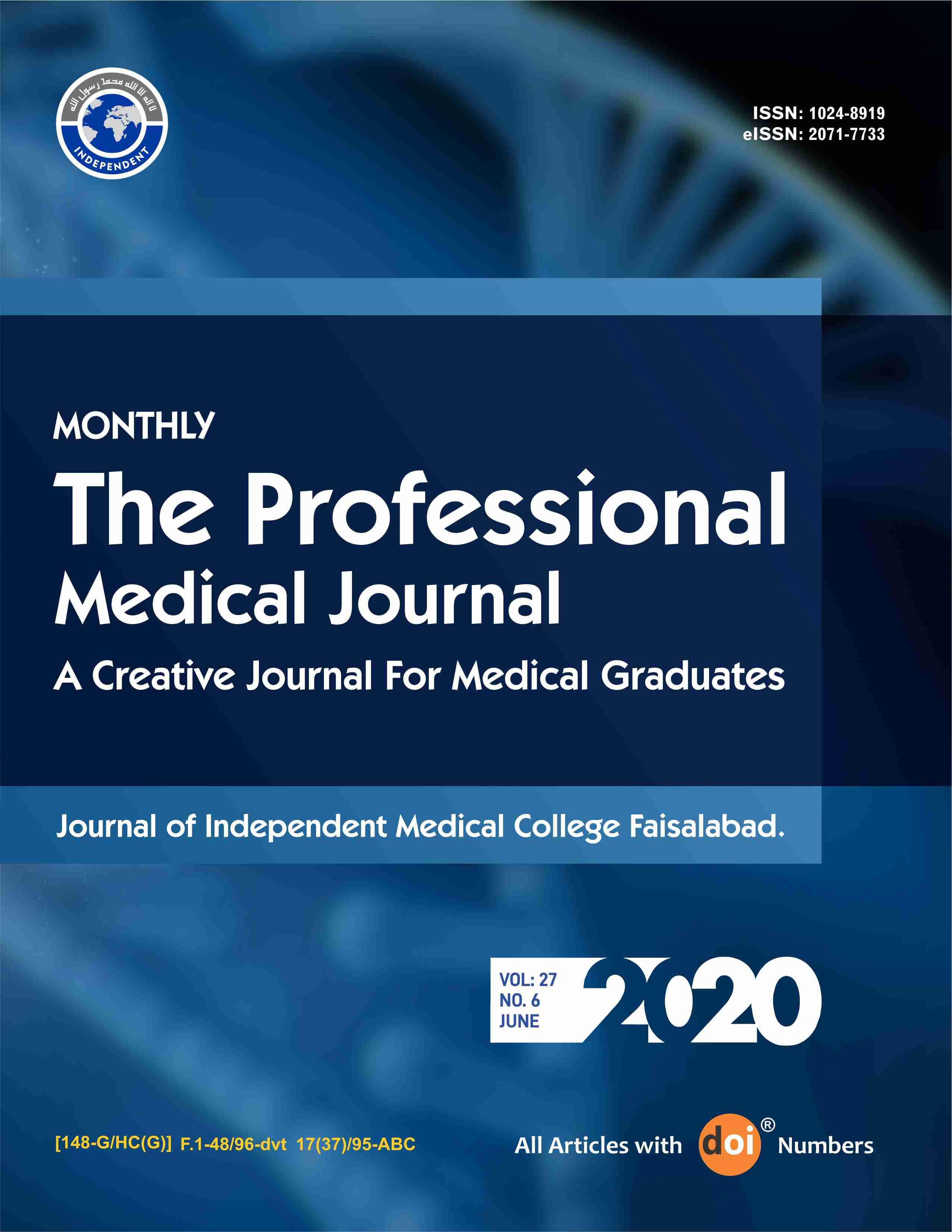Supracondylar fracture humerus (Gartland Type III) managed with closed reduction and percutaneous pinning (CRPP) in children.
DOI:
https://doi.org/10.29309/TPMJ/2019.26.12.1837Keywords:
Supracondylar Humerus fracture (SCHF), closed reduction and percutaneous pinning (CRPP), Open reduction internal fixation (ORIF)Abstract
Objectives: The objective of this study is to assess the functional outcome of close reduction and percutaneous K- wire fixation in supracondylar humeral fracture (SCHF) Gartland type III fractures in children. Study Design: Experimental study. Period: January 2017 to December 2017. Setting: Department of Orthopedics Civil Hospital Karachi. Material & methods: 60 children sustaining a Gartland type III supracondylar humerus fractures less than 1 week old that was treated by closed reduction and percutaneous pinning. Clinical results were evaluated using the Flynn’s criteria. Results: All the 60 children with Gartland type III supracondylar humerus fracture included in this study. 42 (70%) boys and 18 (30%) girls with age ranging between 2 to 10 years .Right side was involved in 37(62%) and left side was involved in 23 (38%) patients. All patients are of extension type fracture. According to Flynn’s criteria cosmetic results were excellent in 54 (90%) and good in 6 (10%) patients and functional results were excellent in 54 (90%), good in 4(7%), fair in 2 (2%) and poor in 1(1%) patient. One patient ulnar nerve injury, after 3 months nerve explored that was contused, symptoms resolved afterwards. Conclusion: Close reduction and percutaneous fixation with K-wire in Gartland III fracture in children is safe and effective treatment method with minimal hospital stay and less complications.


